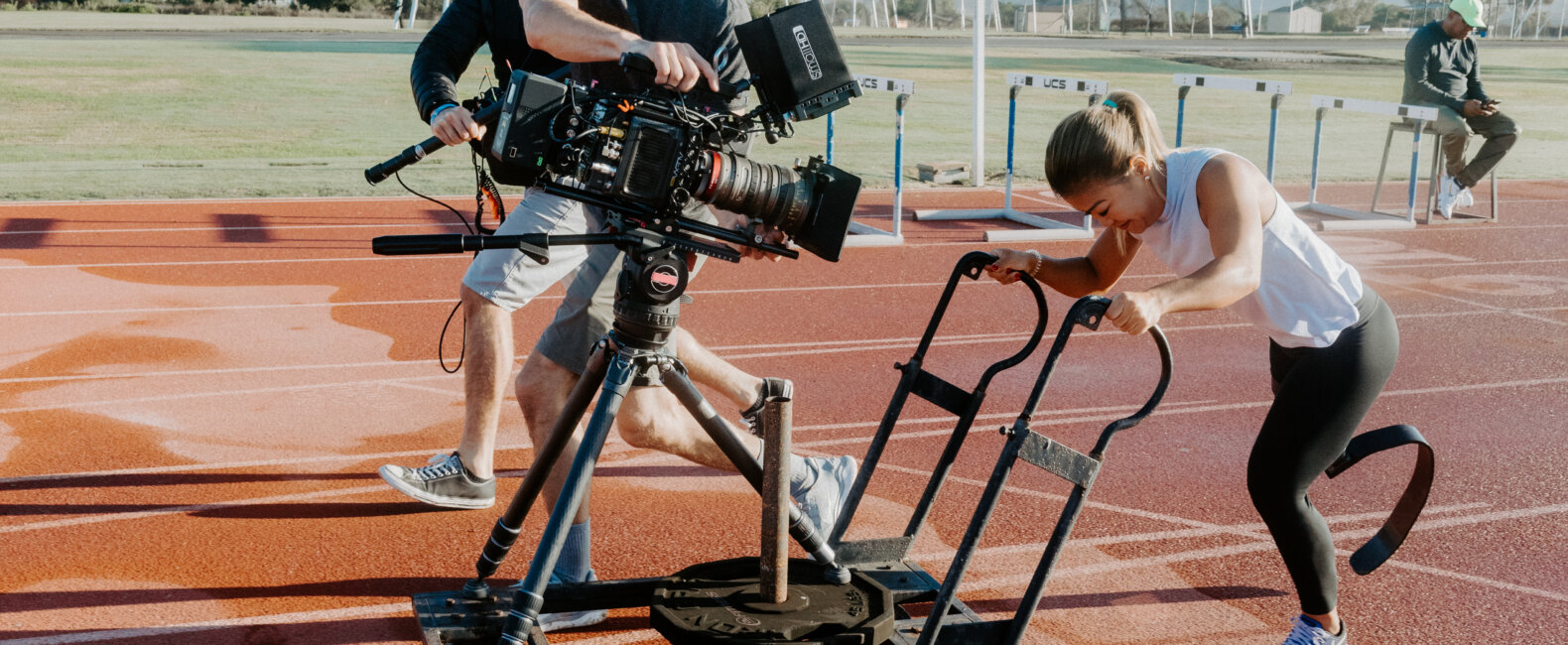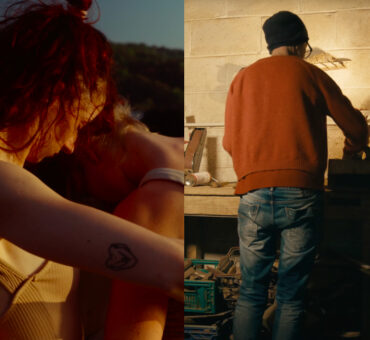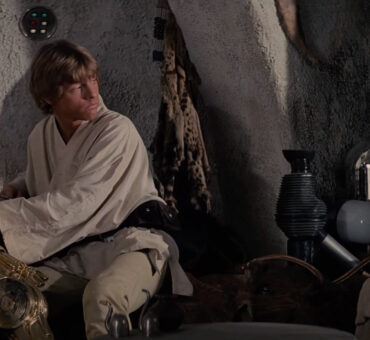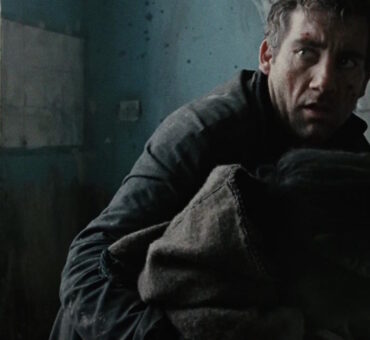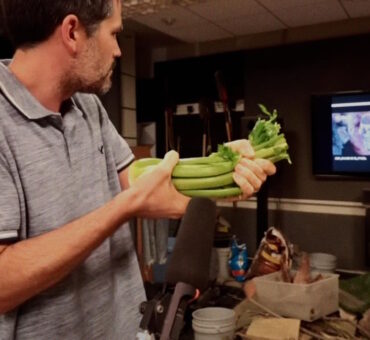Every brief that comes across a filmmaker or agency’s desk provides a choice. In that moment, you can choose to pay the bills or work on a project you love. If you’re one of the lucky ones, those two overlap.
That was the case for the team at Blue Ox Films when they got a brief from The CW. It didn’t have everything planned out, and that was a beautiful thing:
“At Blue Ox, our focus is branded content—Nike, Converse, fitness brands, etc. At times, the creative for these projects is pretty far along and built out. This project was a wide-open playbook,” Taylor Kavanaugh, Blue Ox Films’ Co-Founder, told us.
The Blue Ox team turned this blank page into All American Stories, an 8-part docuseries featuring athletes of all backgrounds, each sharing the obstacles they’ve overcome to achieve greatness. In our conversation, Taylor explains the team’s mindset going into the project—why they wanted to expand the scope of All American Stories and how they pulled off the production.
Musicbed: Let’s start with a little bit of background on this project.
Taylor Kavanaugh: A while back, The CW created a scripted show called All American. It’s a flagship, scripted series, and they take a lot of pride in it. The heads of the network, Rick Haskins and Roman Browne, were tasked with creating some additional marketing for the show.
We actually pitched them on another project, and they weren’t interested due to timing. But, they said, “We really like you guys. We’re working on an innovative way to do some organic, authentic marketing for the scripted show All American. What do you guys think about doing some documentary films and tying them back to the show?”
That was the original brief and that was really it. This was a wide-open playbook. They said, “Hey, here’s the budget, go out and let’s see what you guys can do.”
What was the next step for Blue Ox?
We like to go into overdrive on client expectations. It’s a good thing to do for any client, and for this project it ended up becoming much bigger because of it. They ended up investing a little bit more and we created eight short documentaries that told incredibly heartfelt stories.
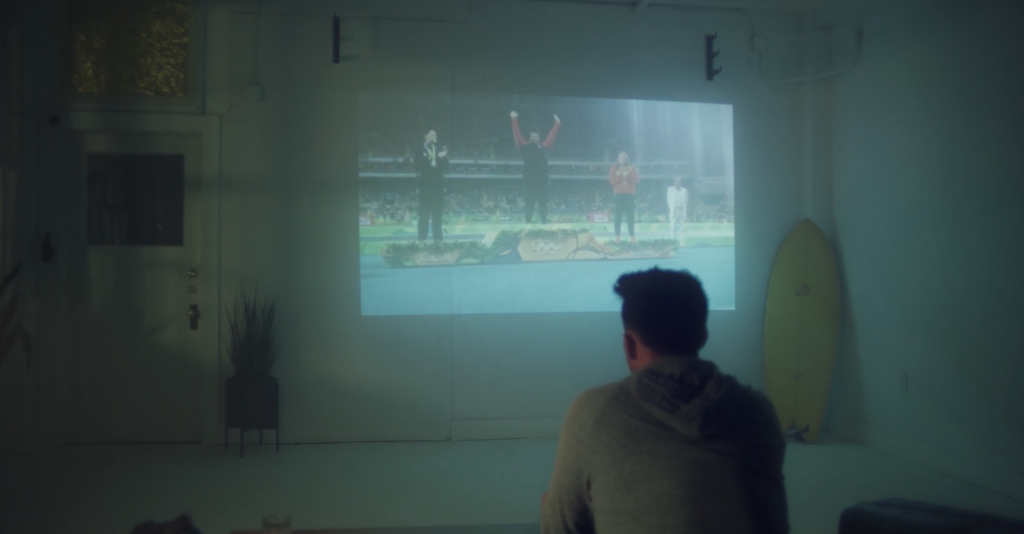
Did you immediately know you were going to expand the project’s scope and size?
We’re a small team, and fairly selective with the work. We don’t just churn out content. But, you have to look at the economics, the budget, and how much time it’s going to take. You aggregate all those data points and make a decision: is this sort of project worth it? We knew from the very beginning we were going to invest some of our own time into this. You don’t always get the chance to tell really meaningful, heartfelt stories like these, so this was definitely worthy of investing our time and energy. From there on out we went pedal to the metal, 100 miles an hour.
When you’re deciding on a project like this, does it come down to how you feel about the story?
It’s twofold. One, as artists we want to create meaningful work. It’s the age-old tension of doing projects that you really love and doing projects that pay the bills. Every artist, agency, or company goes through that decision-making process. If you’re one of the fortunate ones—and I feel like we’re very fortunate—those projects that pay the bills also line up with the projects you’re passionate about.
Second, it’s important for us to temper and battle-test our own team. We had a couple of young editors and young camera operators who specifically wanted to be in on this. Matt and I, as the creatives leading the project, knew that this would be a good long-term project to give other folks on our team good experience in telling these emotive stories.
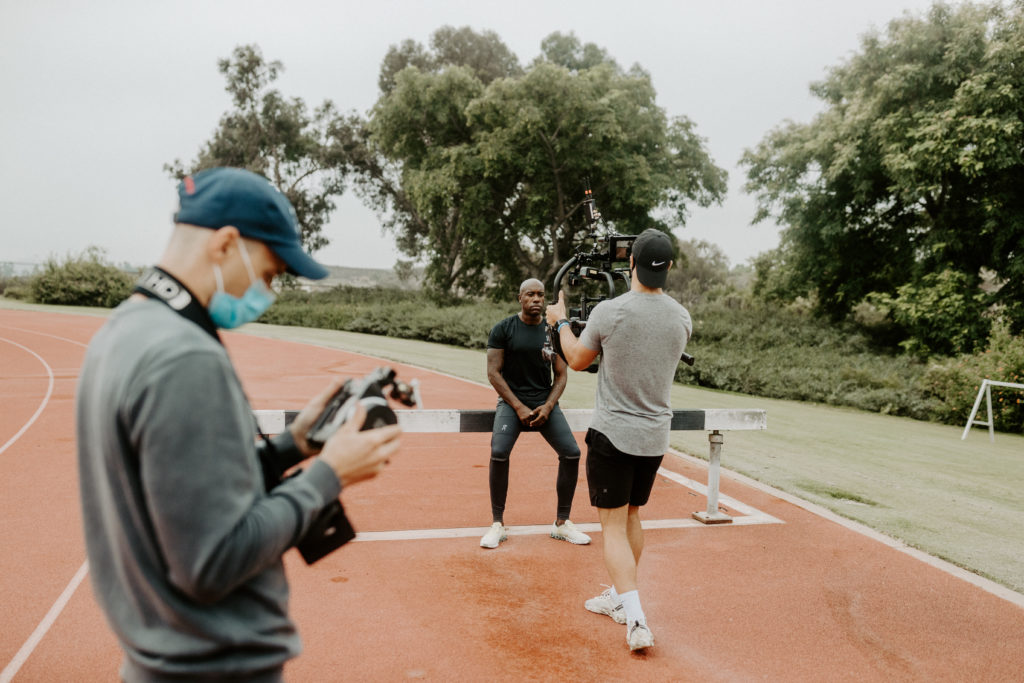
Once you knew you wanted to expand the project, did you re-pitch it to the network?
Yeah. First, we put together a couple of sizzle reels for the client. Then, we started a list of college, high school, and pro athletes at every level. Who are the athletes embodying these stories, temperaments, and storylines? We literally made a list of over 200 stories that we put in a Google Doc to start marking up and our entire team jumped in. There were a lot of people involved with that.
Those two things in tandem were the first step in the pitch. We did our best to show what we would like the show to feel like, sound like, and look like. This is on a television network, so you want those people to have a little bit of juice, some gravitas, and maybe a name associated with it. At the same time, we can’t spend massive appearance fees for the talent, nor do we necessarily want A-list individuals.
We began balancing between those two initial creative deliverables to The CW. It gave the network a sense that we try to have our projects as buttoned-up as possible, solving problems for clients before they even know they exist. We tried to bring the tactical precision of commercial filmmaking into the television world.
How did you narrow down those 200 names?
First, you embrace the messiness of throwing a lot of things against the wall and seeing what sticks. We had a couple of brainstorming sessions, and did a lot of research. We had a couple of researchers, some PAs, and our production manager, who’s an all-star, driving the organization of that. We also have a handful of former student-athletes on our team, and they reached out to connections.
That took a month or two, at least. Once we had all those names, we did some color-coding with a rating system in the same spreadsheet. We did some simple algorithms to get those in order. From there, it was about considering the logistics of production. We have eight different people in eight different places. Where are they located? What does their schedule look like?
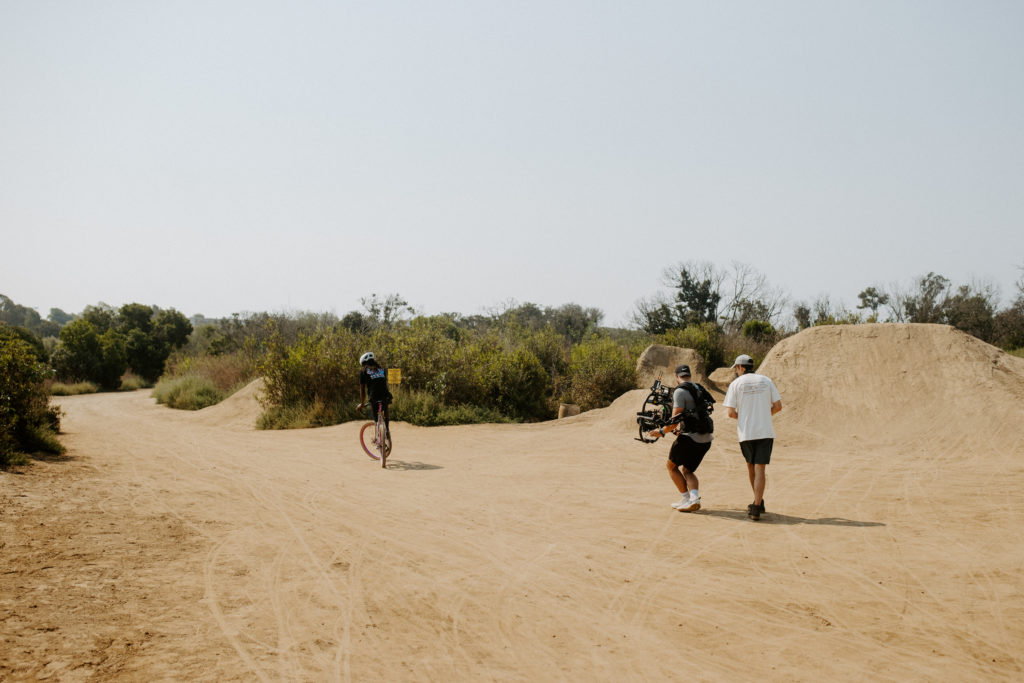
We started our final selections of the eight based on financials and making sure that we were inclusive across the board. That narrowed it down to about two dozen names. Lastly, I made the final selection based on a cinematic point of view and how it would come across on camera.
At this point, we also started curating the music to go with each story. In our branded content, music isn’t something where we say, “Okay, let’s throw the story and the edit together and then just pick some tracks.” That’s certainly not the way we worked on this project. One of the first creative steps we took was establishing music and tonality that we could revisit, even as we were drafting up shot lists.
It sounds like music is integral to the work you do.
Yeah, absolutely. One of the first notes we got from The CW was that they originally wanted us to use their network [music] library. It wouldn’t have cost anything, but we can’t make films where the sound isn’t quite there. We told the network, “We have to use Musicbed’s team.” And it paid off. We know that without good sound design, especially music, the visuals fall flat. They lack those emotive elements.
We were actually looking for a title sequence song for the entire show and podcast. We had it narrowed down to three songs, and Lady Bri’s “This Will Be the Day” just stood out as a clear favorite. The lyrics of her song were so on point with the stories we were telling.
We ended up reaching out to her management through Musicbed and said, “Hey, this theme song is really powerful in the series. Could we do a music video shoot with Lady Bri and create a cool piece of content as a promo for the series?” We recorded a performance with her and flashed images from the show behind her. Just like all of these athletes, she’s still on a journey in her own career. When we showed her the episodes beforehand, she had an emotional reaction. She saw images of people who are on the same journey as her, just in a different way. It was a powerful moment and it spoke to the humanity of the project.
It was really effective for the on-camera interviews to be in a podcast format.
Actually, we were tasked with not only delivering the individual doc episodes, but they wanted a podcast as well. Coming out of an interview with each individual, we had to have enough for television specials, individual digital docs, and podcasts.
We landed on this minimalistic, yet premium quality setup where we knew we could get all of that raw content. Plus, Yogi Roth is an incredible host who’s skilled at drawing out information from people and getting down to the root of their story. We wanted to create an intimate environment where two people could have a meaningful conversation. The visual setup was driven by that as well, and we embraced the fact that we were filming in a sound studio.
We went out and shot all the interviews first, then came back at another time to shoot B-roll. There’s so much to each of these individual stories and it didn’t seem realistic that we could film an interview in the morning and B-roll in the afternoon. It would’ve been more economical, but we wanted to elevate the project as much as we could.
We captured the story itself, assembled it, and then determined what our visuals were going to be. Then, we scheduled another round with each subject, shooting basically a day with them in their city or town, at their workplace, and at their training facility. It was maybe a 10-month, end-to-end production.
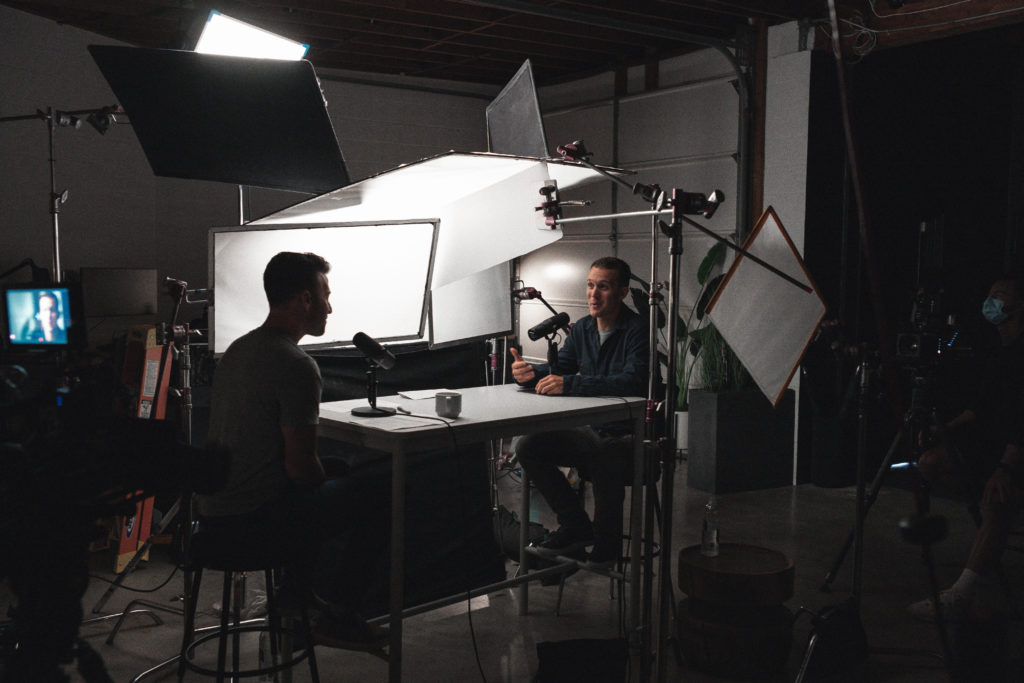
Did splitting it into two shooting days help build an intimacy with the subjects?
That’s an under-appreciated part of documentary filmmaking—the comfort level and relationship. Even if the shoot has to happen fast, establishing that rapport is a critical part. They need to trust you’re going to portray them in a positive light. Yogi’s so inviting in how he interacts with people that I think there was a pretty quick trust there. I’d like to think that our team also embodied that as well.
When we went back out there, after we had conducted interviews, it felt like these subjects were willing to give us more than the four and a half hours that the agent wrote up in their contract. We got a little more mileage out of it. We may have gotten lucky, but it’s also a skill, setting up the environment to allow those things to happen.
What was The CW’s reaction to the final edit?
They were really blown away by what they saw in the beginning, and how it continued to progress over time. I think it just resulted in really good, meaningful work that both our team and a lot of the team at CW are proud of. It’s easy to create shit. It takes a lot more effort to create something that’s crafted and meaningful. We see so much content nowadays, and you can’t fake it. We put everything we had into it, and the response was pretty incredible.
Read about another docu-style piece of branded content for Arm & Hammer from Director Jane Qian.















































































